Before the Second World War Ropners were the owners of one of the largest fleet of tramp ships flying the Red Ensign. With 45 ships owned at the beginning of September 1939, and a further 3 delivered in 1940, 33 ships wholly owned by the company with a further 11 vessels managed on behalf of the British Government being lost to enemy action. Three further vessels were lost by accidental causes.
The contribution to the war effort was great, but so were the losses, From a purely statistical point of view these ships amounted to 391,139 deadweight tons and 234,489 gross tons. A total of 638 personnel were lost including 17 masters, 2 apprentices and 7 passengers.
This article gives details of the ships, how they were lost and the ships taken over at the end of the war from the Ministry of War Transport as their replacements. In addition the ultimate fates of the U Boats and German raiders responsible for the losses are given.
WAR LOSSES
Firby
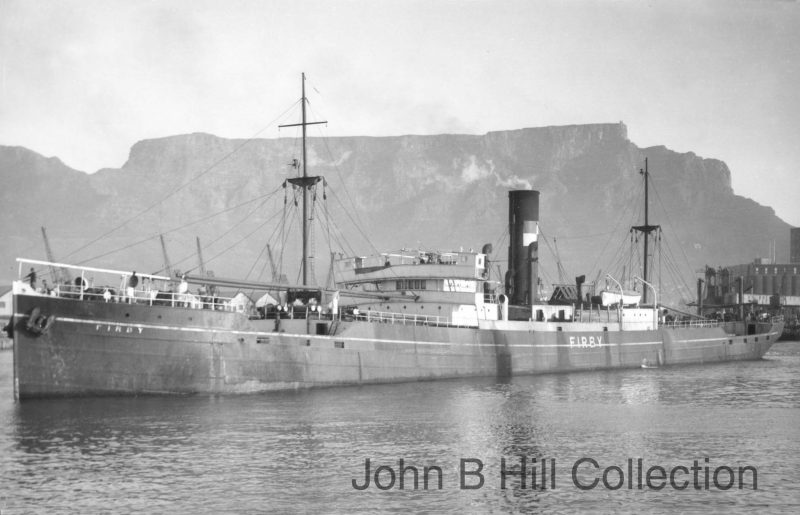 4,868 gross tons. Built by W. Gray & Co., West Hartlepool, completed in 1926.
4,868 gross tons. Built by W. Gray & Co., West Hartlepool, completed in 1926.
11.9.1939 – torpedoed and sunk by gunfire by German submarine U-48 off the north coast of Scotland. The ship was in ballast and no lives were lost.
Heronspool
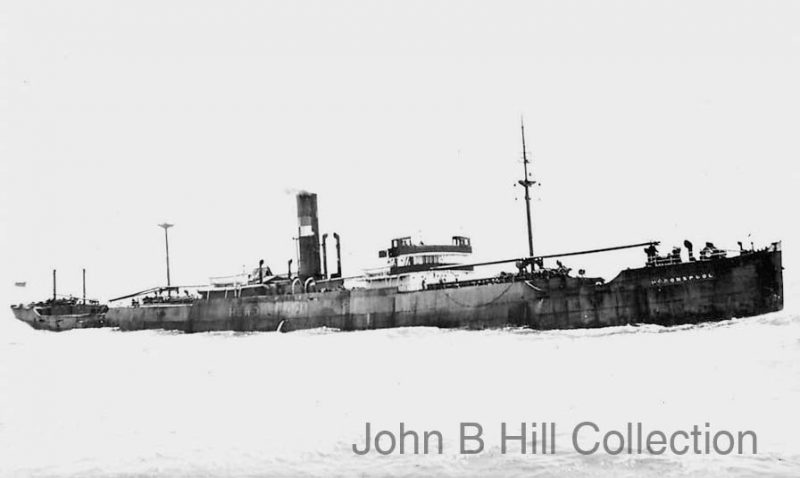 5,202 gross tons. Built by Wm. Gray and Co. Ltd., West Hartlepool and completed in 1929.
5,202 gross tons. Built by Wm. Gray and Co. Ltd., West Hartlepool and completed in 1929.
13.10.1939 – torpedoed by German submarine U48 in the North Atlantic en route from Swansea to the St. Lawrence with a cargo of Coal. No lives were lost.
Willowpool
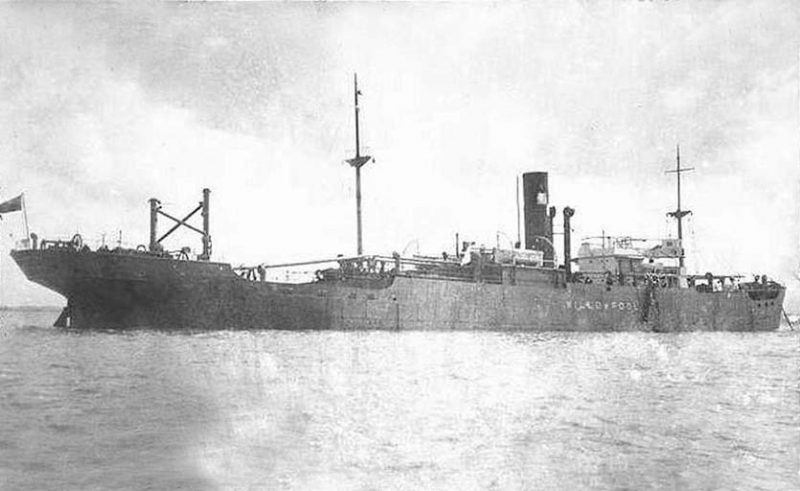 4,815 gross tons. Built by Ropner Shipbuilding and Repairing Co., Stockton on Tees and completed in 1925. She was the last ship built by these builders for Ropners’ before the closure of the yard.
4,815 gross tons. Built by Ropner Shipbuilding and Repairing Co., Stockton on Tees and completed in 1925. She was the last ship built by these builders for Ropners’ before the closure of the yard.
10.12.1939 – struck a mine off Newarp Light Ship and sank. The vessel was in ballast and no lives were lost
Romanby
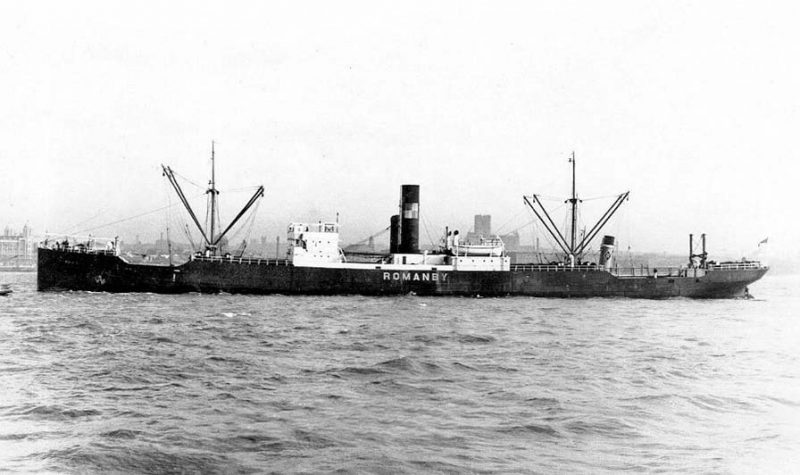 4,887 gross tons. Built by Wm. Gray & Co., West Hartlepool and completed in 1927.
4,887 gross tons. Built by Wm. Gray & Co., West Hartlepool and completed in 1927.
10.4.1940 – sunk at Narvik, Norway when the Germans invaded that country. The crew were captured and later released and made their way on foot to Sweden where they were interned.
In January 1941 Mr. A. Henry the Chief Officer with 16 other members of the crew volunteered to attempt to run the German blockade of the Skagerrak in a Norwegian vessel loaded with a valuable cargo of machine tools etc. Mr. Henry was appointed to command the Elizabeth Bakke and was successful in the mission arriving in the Clyde on 31.1.1941.
Salmonpool
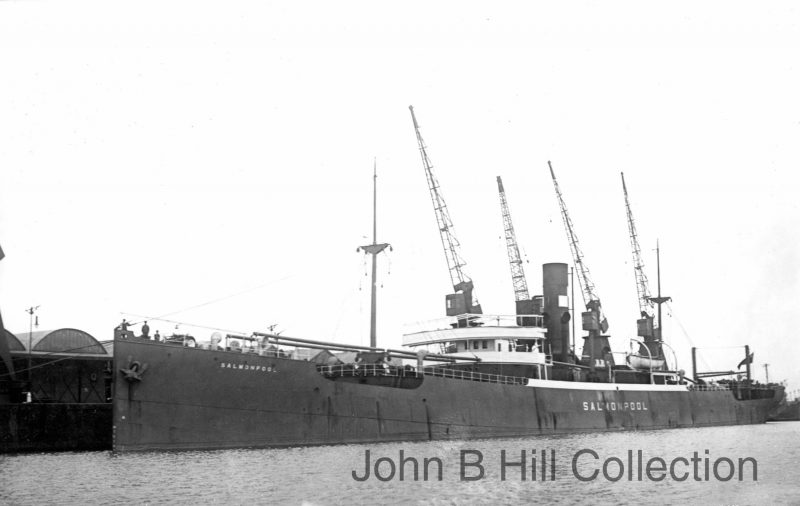 4,803 gross tons. Built by Irvine Shipbuilding and Drydock, Hartlepool completed in 1924.
4,803 gross tons. Built by Irvine Shipbuilding and Drydock, Hartlepool completed in 1924.
This ship had just completed discharging on the 14th April 1940 with a cargo of coke at Saude, Norway when the Germans over ran the country. An attempt was made to get away but the vessel was intercepted and captured, all the crew being taken prisoner and sent to Germany. Salmonpool was taken over by the Germans and renamed Putsig and employed in the ore trade from Lulea to German Baltic ports.
The ship was later taken over by the Ministry of War Transport at the end of the war and renamed Empire Salmonpool and put back under the Management of Ropners.
In 1947 she was sold and became Irene K. being handed over to her new Greek owners on the 21.2.1947. In 1955 she became White Lodge and she was sold again in the same year becoming Puntarenas under the Costa Rica flag before being scrapped in 1958 in Spain.
Swainby
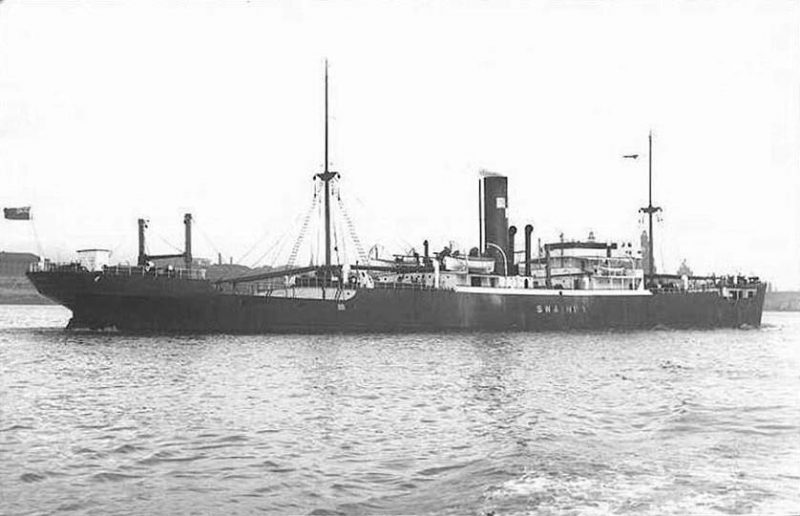 5,811 gross tons. Built by Ropner and Son, Stockton on Tees and completed in 1917.
5,811 gross tons. Built by Ropner and Son, Stockton on Tees and completed in 1917.
17.4.1940 – torpedoed by the German submarine U13 off the north coast of Scotland whilst in ballast. She was returning to the U.K. after reversing her course from Norway upon hearing of the German invasion of that country. No lives were lost.
Hawnby
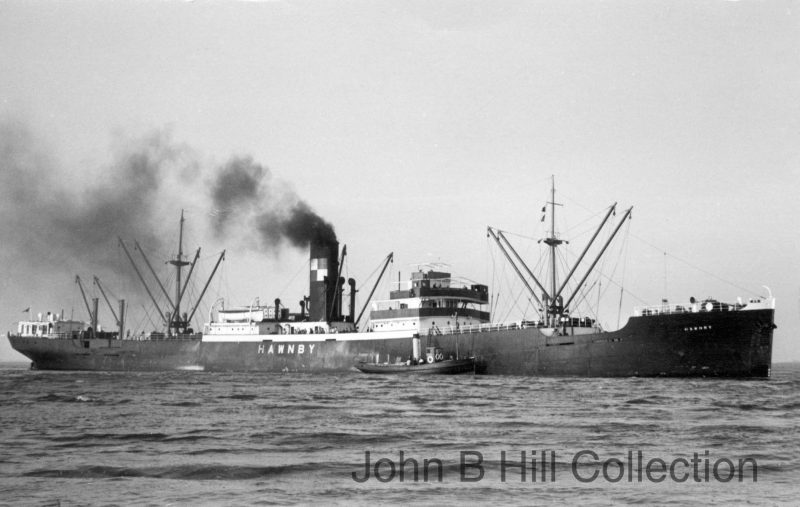 5,404 gross tons. Built by Wm. Gray and Co., West Hartlepool and completed in 1936.
5,404 gross tons. Built by Wm. Gray and Co., West Hartlepool and completed in 1936.
20.4.1940 – whilst carrying a cargo of coal and in convoy from the Tyne to Genoa she struck a magnetic mine off Southend. No lives were lost.
Haxby
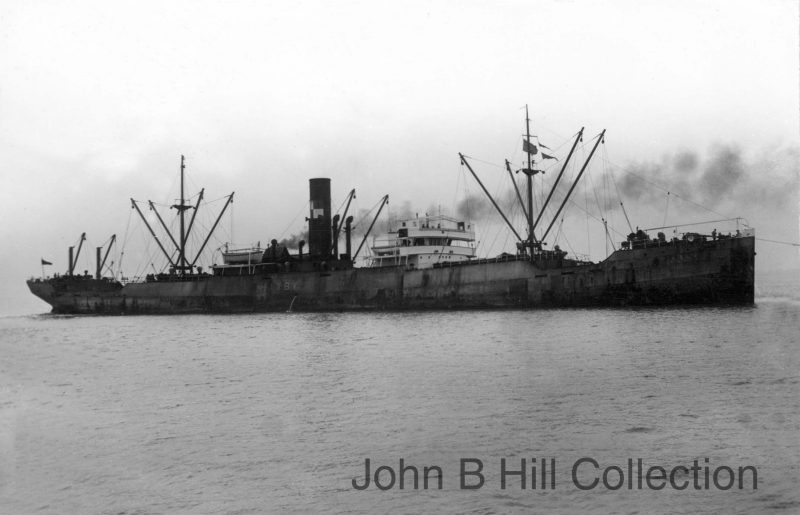 5,207 gross tons. Built by Wm. Gray and Co., West Hartlepool and completed in 1929.
5,207 gross tons. Built by Wm. Gray and Co., West Hartlepool and completed in 1929.
24.4.1940 – sunk by the German Raider “Orion” (Raider A) in the South Atlantic. She left Glasgow on the 6th April 1940 in ballast for Corpus Christi and was posted missing believed lost on the 5th July 1940. On the 5th September 1940 the owners received news that her master Captain Arundell and 22 officers and men had been landed at Gibraltar. It transpired that when the vessel had been attacked by the German raider, 16 members of the crew had been killed. The raider had opened fire without warning and Haxby was unable to retaliate as the second salvo shattered the gun platform and killed the crew. Captain Arundell and the remaining members of the crew were taken aboard the raider and remained on her for 3 months during which she was engaged in mine laying off Cape Town and also off the coast of New Zealand. The raider later captured a Norwegian ship, Tropic Sea and transferred a prize crew to her together with the prisoners from Haxby. The Tropic Sea set sail for Bordeaux but was intercepted by the submarine HMS/M Truant (Lt. Comer Rider-Haggfard) when two days off the French coast.
The crew from Haxby were taken onboard Truant and landed at Gibraltar. The Norwegian crewmembers were rescued by seaplane whilst the German prize crew was left in the ships boats.
The submarine HMS/M Truant survived the war and was wrecked near Cherbourg on 9.12.46 en route to the breakers at Briton Ferry in Wales.
The Raider Orion was one of the most successful of the German armed raiders converted from merchant ships, and fitted with hidden armament. She was built by Blohm and Voss for the Hamburg Amerika Line as the Kurmark and completed in 1930. She carried 6 x 5.9 inch guns 6 x 21 inch torpedo tubes and 2 aircraft plus 228 mines as well as smaller anti aircraft weapons. During a cruise of 511 days disguised as a Dutch vessel Beemsterdijk she sank or captured ships totalling 80,279 gross tons. Following her offensive cruise in the southern hemisphere the ship managed to beat the blockade and get back to Germany. In 1942, she became a floating workshop and in 1944 she was renamed Hektor and converted into a gunnery training ship before being bombed and sunk at Swinemunde on the 4th April 1945.
Otterpool
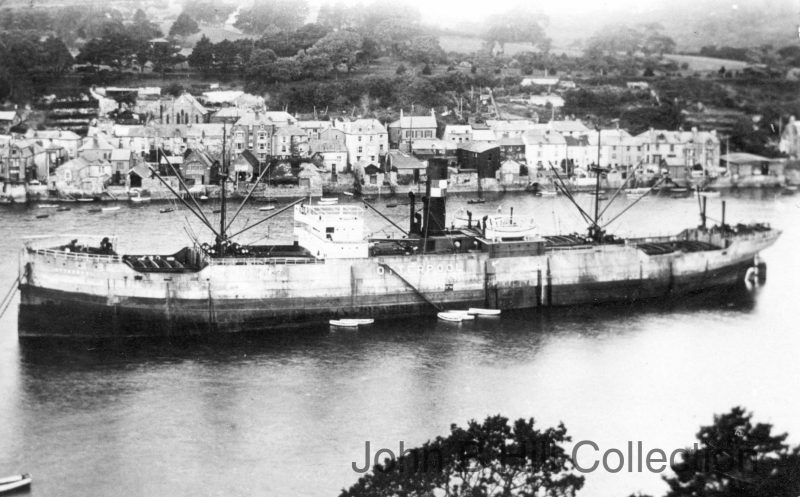 4,867 gross tons. Built by Wm. Gray and Company, West Hartlepool and completed in 1926.
4,867 gross tons. Built by Wm. Gray and Company, West Hartlepool and completed in 1926.
20.6.1940 – torpedoed and sunk by German submarine U30 South East of the Scilly Isles. She was on passage from Bona to the U.K. with a cargo of iron ore. Her master, Captain Prince and all the officers except the chief officer plus a further 18 ratings were killed.
Troutpool
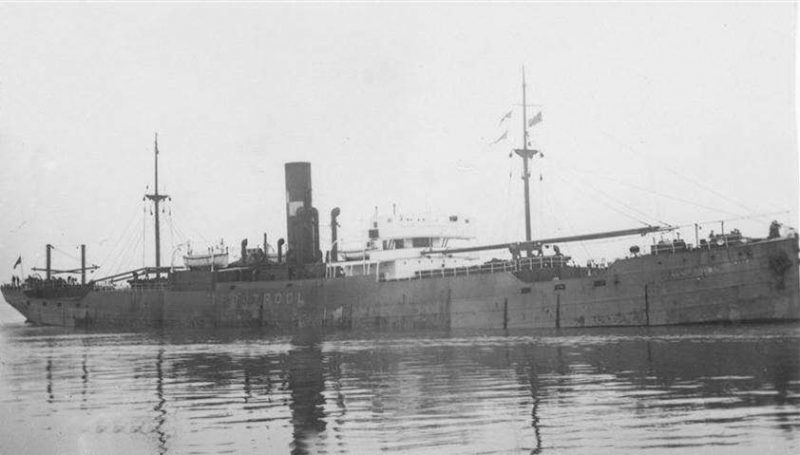 4,886 gross tons. Built by Wm. Gray & Co., West Hartlepool and completed in 1927.
4,886 gross tons. Built by Wm. Gray & Co., West Hartlepool and completed in 1927.
Troutpool was lost on the 20th July 1940. She had reached Belfast Lough en route homewards from the River Plate with a full cargo of grain. While maneuvering in the Lough the degaussing coil was switched off and a magnetic mine underneath the vessel exploded instantly. The ship went down almost at once and 11 seamen lost their lives.
Empire Merlin
5,763 gross tons. Built by Ames S.B. and D.D. Co., Seattle, Washington and completed in 1919 as the West Isleta. Purchased by the MOWT in 1940 and managed by Ropners.
The ship was lost on the 25th August 1940 being torpedoed and sunk by the German submarine U48 in the North Atlantic while on passage from the U.S.A. to the U.K. with a general cargo. The vessel was steaming in convoy and was the last ship on the port quarter. The lookout on the forecast head (the only survivor) heard a dull thud. This he took to be the noise of the ship diving into a trough of waves. On turning around, he saw the midship section in flames. He ran to the boat deck just in time to see the aft end of the ship disappear having broken off immediately after the torpedo struck.
The seaman who survived swam around for almost three hours before being picked up by an escort.
The master, Captain Simpson, 3 navigating officers, 3 engineers, 1 radio officer and 24 ratings lost their lives.
Wandby
4,947 gross tons. Built by Sir. J. Laing & Sons, Sunderland and completed in 1940.
This ship was torpedoed off Northern Ireland by the German submarines, U-46 and U-47, on the 19th October 1940 she was returning from the Pacific after her maiden voyage with a cargo of lumber and metal.
There were no lives lost, however eleven members of the crew boarded an abandoned tanker, but she broke in two and sank and the men had to be rescued a second time.
Sedgepool
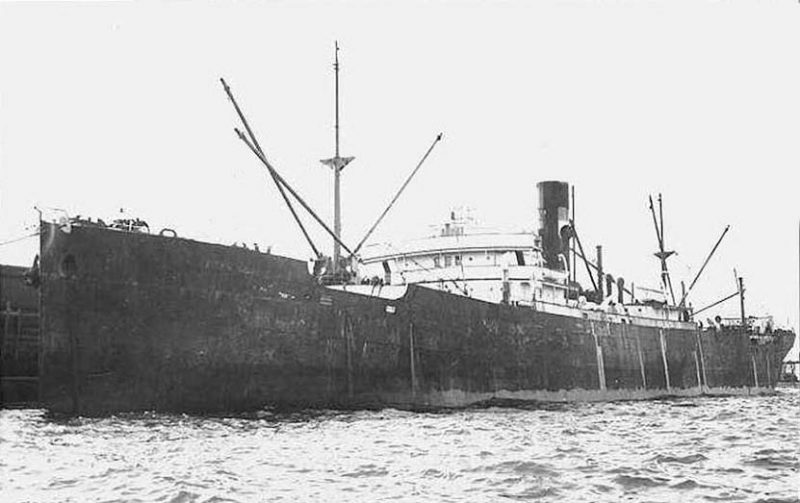 6,530 gross tons. Built by Ropner & Son, Stockton on Tees and completed in 1918.
6,530 gross tons. Built by Ropner & Son, Stockton on Tees and completed in 1918.
Sedgepool was lost in the same attack that accounted for Wandby on the 19th October 1940 torpedoed by German submarine U-99. She was on passage from the St. Lawrence to the U.K. with a full cargo of grain. The explosion caused the wing of the bridge to collapse and her Master, Captain Witten and the 2nd Mate were killed. The 3rd Engineer also lost his life in the engine room.
Empire Bison
5,972 gross tons. Built by South Western S.B. Co., San Pedro, California and completed in 1919 as the West Cawthon for the US Shipping Board.
The management of this ship was taken over in 1940, and she was torpedoed and sunk in the North Atlantic by German submarine U-124 on 1st November 1940 with the loss of 38 lives. In addition to the crew the ship was carrying as passengers 7 ratings from the Armed Merchant Cruiser Rajputana. Four survivors including the 2nd Mate and one of the passengers spent 8 days on a raft before being picked up.
Rajputana (16,568 gross tons) had been a P & O passenger liner completed in 1926 and converted to an Armed Merchant Cruiser in 1939. She was torpedoed by the German Submarine U-108 on the 13th April 1941 150 miles south of Iceland.
Pikepool
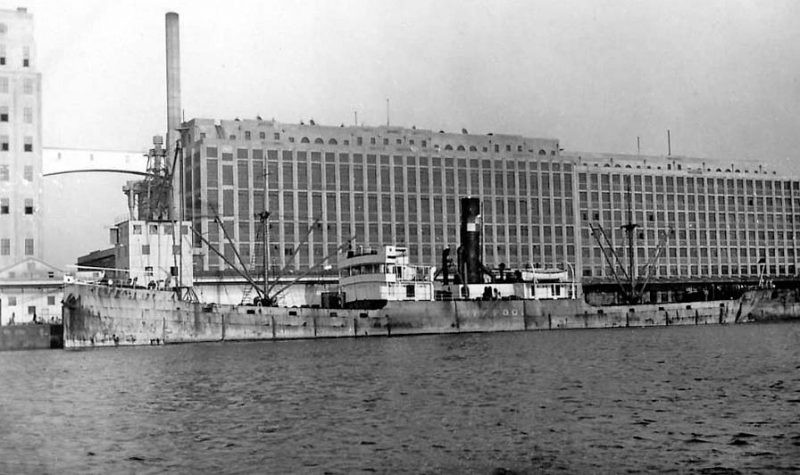 3,683 gross tons. Built by Ropner and Sons at Stockton on Tees, and completed in 1909.
3,683 gross tons. Built by Ropner and Sons at Stockton on Tees, and completed in 1909.
The ship was mined in the Irish Sea on the 22nd November 1940 whilst in ballast. 17 Officers and men lost their lives and the survivors were in poor condition when picked up after sitting in waterlogged rafts for about 48 hours.
Rushpool
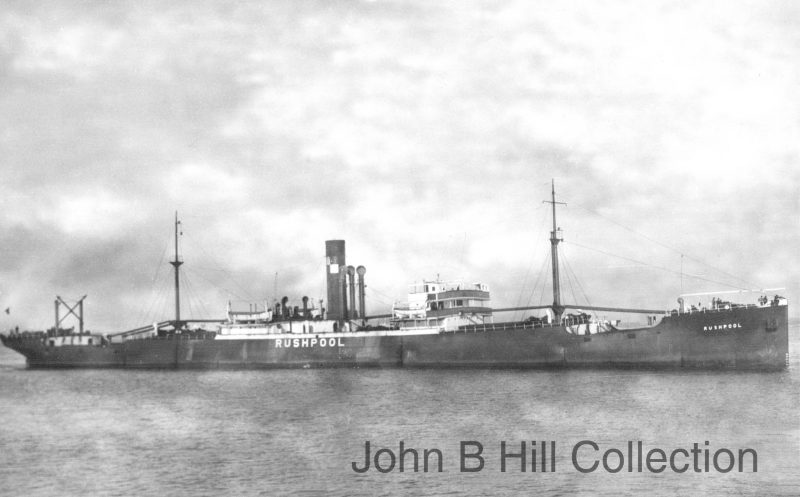 5,125 gross tons. Built by Cowpen Dry Docks and Shipbuilding Co., Blyth and completed in 1928.
5,125 gross tons. Built by Cowpen Dry Docks and Shipbuilding Co., Blyth and completed in 1928.
On the 29th January 1941 she was torpedoed and sunk by the German submarine U-94 in the North Atlantic. The vessel was carrying a cargo of grain, and no lives were lost.
Warlaby
4,876 gross tons. Built by Wm. Gray & Co., West Hartlepool and completed in 1927.
This ship was sunk on the 12th February 1941 whilst on her way home in convoy from Alexandria via the Cape of Good Hope with a cargo of cottonseed. She was attacked and sunk by the German Heavy Cruiser Admiral Hipper operating in the mid Atlantic. The Master, Captain Murray, and 35 officers and men lost their lives, there being only 3 survivors including the Chief Officer. The attack was at close range using large and small calibre guns, all lifeboats and life rafts being destroyed.
Admiral Hipper was a 13,900 ton heavy cruiser armed with 8 x 8 inch guns 12 x 4.1 inch guns., 12 x 21 inch torpedo tubes 3 aircraft and many smaller anti aircraft guns. Powerful steam turbines gave her a maximum speed of 32 knots and a range of 6,800 miles at 18 knots. She carried a crew of 1,600 officers and men.
From June 1940 to February 1941 she was raiding in the North Atlantic destroying 12 ships (including Warlaby) totalling 66,131 tons.
The cruiser was built by Blohm and Voss at Hamburg, being launched on the 6.2.1937 and completed in 1939.
She was used as a training ship from 1944 and scuttled at Heikendorfer Bight on the 3rd May 1945. The wreck was broken up in 1946.
Mansepool
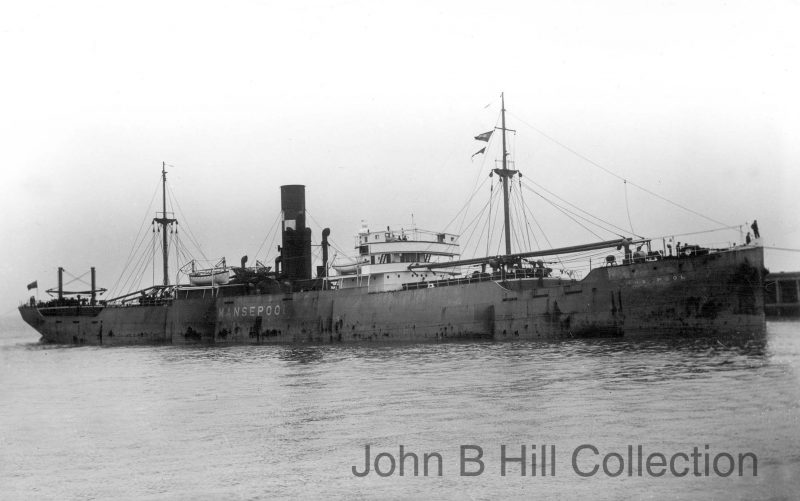 4,894 gross tons. Built by Wm. Gray & Co., West Hartlepool and completed in 1928.
4,894 gross tons. Built by Wm. Gray & Co., West Hartlepool and completed in 1928.
On the 24th February 1941 the ship was torpedoed and sunk by the German submarine U-97 whilst in ballast in the North Atlantic. Two lives were lost and four ratings were badly scalded.
Boulderpool
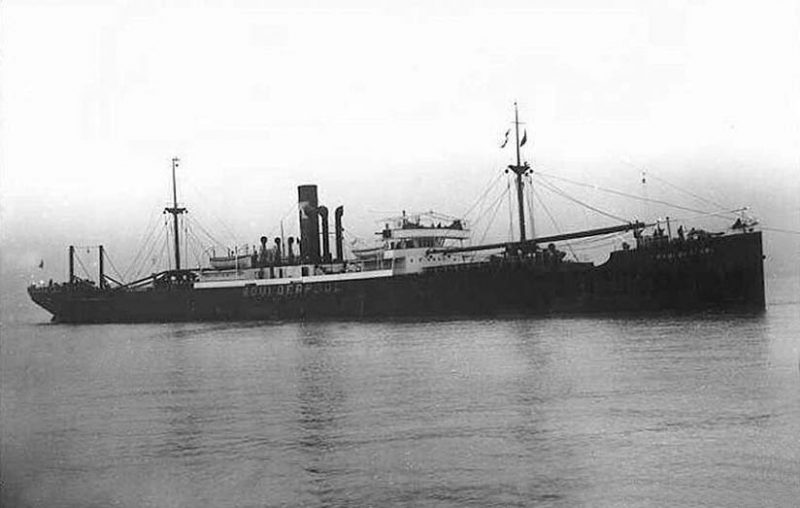 4,803 gross tons. Built by Smiths Dock Co., Middlesbrough and completed in 1928.
4,803 gross tons. Built by Smiths Dock Co., Middlesbrough and completed in 1928.
On the 7th March 1941 the ship was struck by a torpedo from a German E Boat (Fast Motor Torpedo Boat) and sunk off Haisboro’ Buoy, Norfolk. No lives were lost.
Hindpool
 4,897 gross tons. Built by Wm. Gray and Co., West Hartlepool being completed in 1928.
4,897 gross tons. Built by Wm. Gray and Co., West Hartlepool being completed in 1928.
Torpedoed and sunk in the North Atlantic on the 8th March 1941 by German U Boat U-124 north of the Cape Verde Islands on passage from Pepel to the Tyne with a cargo of Ore. Her Master, Captain Tinnock, and 27 officers and men lost their lives.
Ullapool
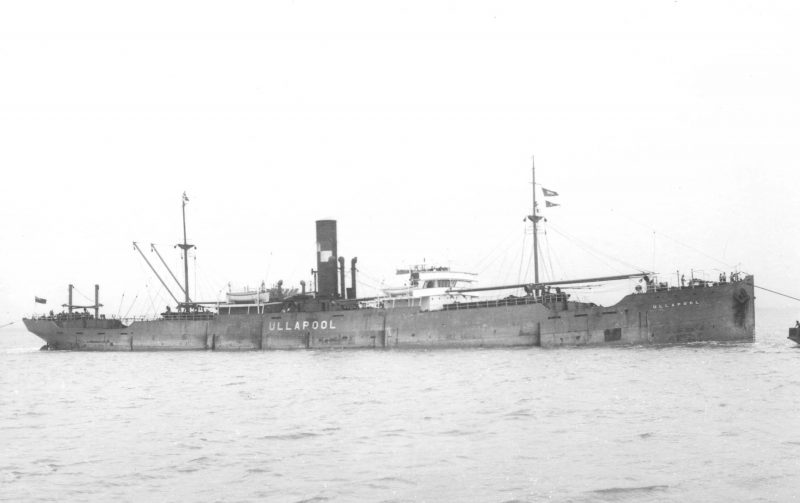 4,891 gross tons. Built by Wm. Gray & Co., West Hartlepool and completed in 1927.
4,891 gross tons. Built by Wm. Gray & Co., West Hartlepool and completed in 1927.
Ullapool was lost on the 13th March 1941 after the vessel had just arrived in the Mersey with a full cargo of grain from Halifax N.S. having survived the risks of the North Atlantic. On the night of the 13th March 1941, the Luftwaffe staged a ‘blitz’ on Merseyside and a parachute mine dropped clean onto the deck of the ship sinking her immediately. Her Master, Captain Thwaites, and a further 14 crew members were killed. The wreck was dispersed by explosion in 1945.
Alderpool
4,313 gross tons. Built by Wm. Pickersgill and Sons, Sunderland and completed in 1930. The vessel was launched as Northwick and completed as Alderpool following purchase by Ropners.
She was torpedoed by the German submarine U-46 on the 3rd April 1941. All hands took to the boats and the company vessel Thirlby in the same convoy manoeuvred to pick up the crew although the submarine was still in sight. Two torpedoes narrowly missed Thirlby and later another torpedo from a second submarine which struck Thirlby but failed to explode. Thirlby opened fire, and the submarine crash-dived.
(See also Thirlby)
Somersby
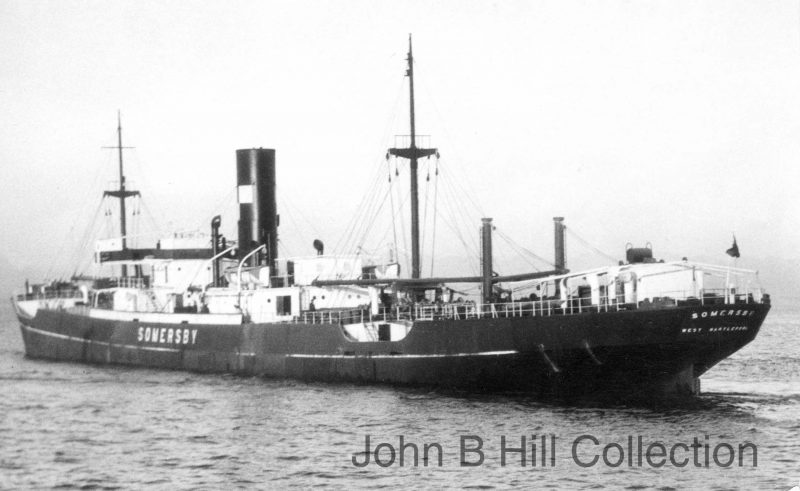 5,168 gross tons. Built by Wm. Gray and Co. at West Hartlepool and completed in 1930.
5,168 gross tons. Built by Wm. Gray and Co. at West Hartlepool and completed in 1930.
Vessel was torpedoed on 13th May 1941 by German submarine U-111 in the North Atlantic whilst in convoy and carrying a cargo of grain. There were no casualties and the Greek steamer Marika Protopapa rescued the crew.
Ainderby
 4,860 gross tons. Built by Wm. Gray & Co., West Hartlepool and completed in 1925.
4,860 gross tons. Built by Wm. Gray & Co., West Hartlepool and completed in 1925.
Torpedoed and sunk on 10th June 1941 by German submarine U-552 in the North Atlantic on passage from Brazil with a full cargo of iron ore for the U.K. 12 ratings were lost.
Criton
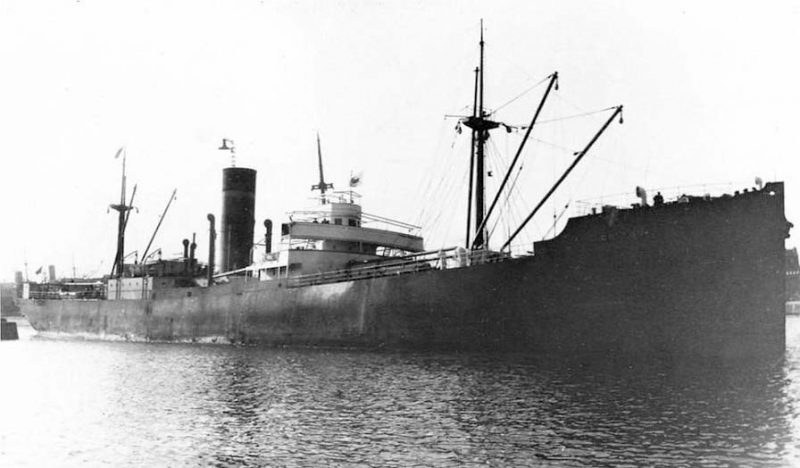 4,564 gross tons. Built by Wm. Gray and Co., West Hartlepool in 1927.
4,564 gross tons. Built by Wm. Gray and Co., West Hartlepool in 1927.
This ship was French and taken over at Freetown by the Ministry of Shipping, and Ropners’ were requested to manage her. Her French owners were Cie de Navigation d’Orbigny, La Rochelle.
A crew was provided by the Ministry at Freetown made up of Master, Officers and men who had been shipwrecked and were waiting at the port for a passage back home. Captain Dobson, ex Wray Castle in command.

Wray Castle (4,253 gross tons) had been sunk by a submarine torpedo on the 3rd May 1941 off the coast of Nigeria.
The Criton loaded a cargo of ore at Pepel and left Freetown about 17th/18th June 1941 in convoy. Unfortunately she was a ‘straggler’ and in spite of valiant efforts to keep pace with the convoy she was left behind with orders to return to Freetown. On the 21st June 1941 she was overtaken by a Vichy-French sloop and ordered to stop. Captain Dobson’s reply did not meet with the approval of the French vessel, which immediately opened fire from a very short range. Criton was in a sinking condition and the crew took to the boats, and the French vessel left the scene. Some hours later the crew landed at Conakry in French Guinea, controlled by Vichy, and the crew were immediately arrested and detained.
The men were kept in terrible conditions, until the Germans took over Vichy France in November 1942 when the crew was repatriated via Freetown. Two of the crew died whilst in captivity.
Swiftpool
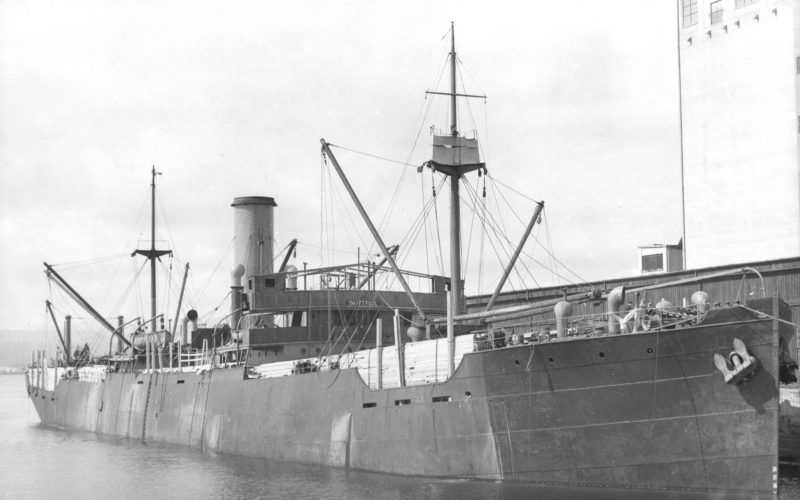 5,205 gross tons. Built by Wm. Gray and Co., West Hartlepool and completed in 1929.
5,205 gross tons. Built by Wm. Gray and Co., West Hartlepool and completed in 1929.
The vessel was torpedoed and sunk by German submarine U-372 on the 5th August 1941 west of Ireland. She was en route from Pepel to the U.K. with a cargo or ore. Her Master, Captain Clark, and a further 41 crew were lost, there were only two survivors.
Stonepool
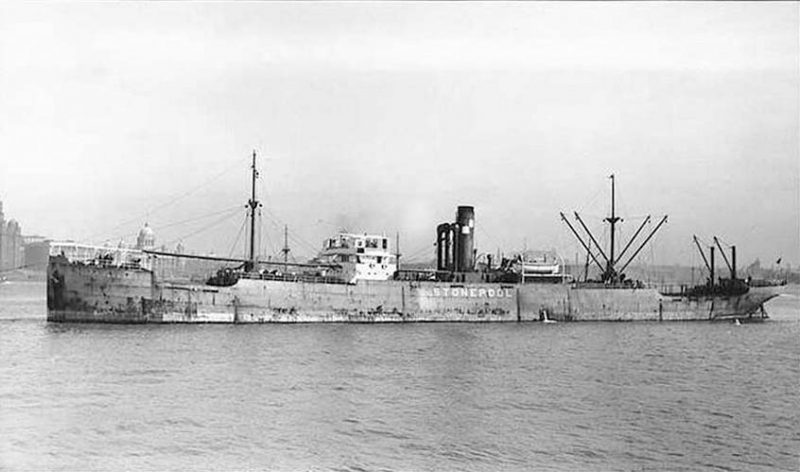 4,803 gross tons. Built by Smiths Dock Company, Middlesbrough and completed in 1928.
4,803 gross tons. Built by Smiths Dock Company, Middlesbrough and completed in 1928.
On the 11th September 1941 she was torpedoed by the German submarine U-207 in North Atlantic east of Greenland. Her Master Captain Nicholson, and a further 40 members of her crew were lost.
Ashby
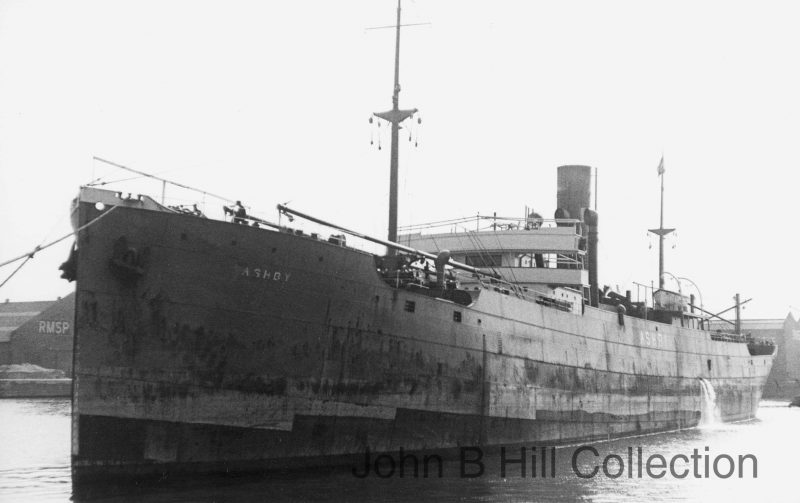 4,871 gross tons. Built by Cowpen Dry Docks and Shipbuilding Co., Blyth and completed in 1927.
4,871 gross tons. Built by Cowpen Dry Docks and Shipbuilding Co., Blyth and completed in 1927.
Torpedoed by German submarine U-43 in the mid Atlantic on 30th November 1941. 17 Officers and men including her master, Captain Frank, were lost. After seeing survivors away from the ship, Captain Frank is reported to have gone back into the saloon for something when the ship suddenly sank carrying him with her.
Thirlby
 4,888 gross tons. Built by Wm. Gray and Company, West Hartlepool and completed in 1928.
4,888 gross tons. Built by Wm. Gray and Company, West Hartlepool and completed in 1928.
See also Alderpool above.
cannon fire being directed at the bridge. The first stack of bombs missed but in the second attack one bomb hit the forward well deck blowing down the fore mast and wrecking the bridge. In the next attack a bomb wrecked the forecastle, two of the crew being killed. Orders were given to abandon ship in the hope that the plane, believing the vessel to be sinking would clear off. The ruse was successful, and Thirlby was then reboarded and attempts made to deal with the fire, which was raging forward. It was found that No.1 hold was flooded, the well deck being awash, and she had a hole in her side. Two hours later the plane returned but seeing the condition of Thirlby made no further attack. The boarding party that had taken to the boats a second time returned to the ship and the rest of the crew together with those rescued crew from Alderpool was picked up.
Thirlby was successfully brought to Loch Ewe where temporary repairs were carried out to enable her to move to the Clyde for permanent repair.
On the 23rd January 1942 Thirlby was torpedoed and sunk by the German submarine U-109 off Cape Sable on the North American coast. The vessel was carrying a cargo of timber and 3 seamen lost their lives.
Carperby
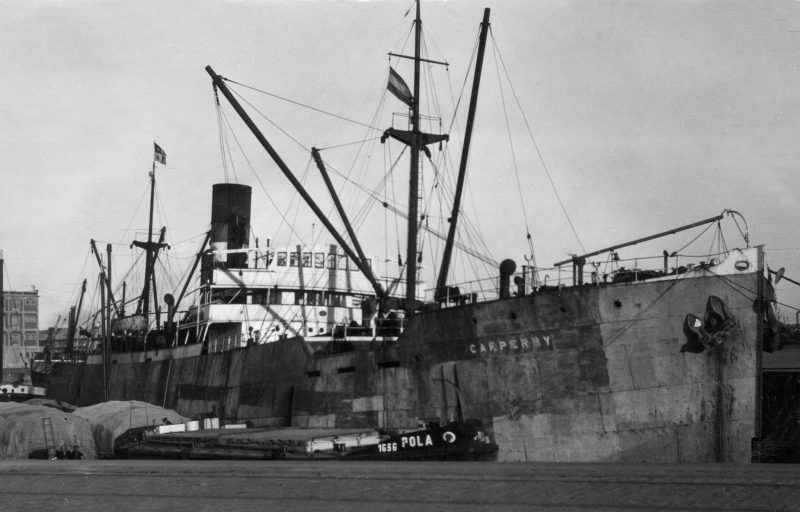 4,890 gross tons. Built by Wm. Gray and Co., West Hartlepool and completed in 1928.
4,890 gross tons. Built by Wm. Gray and Co., West Hartlepool and completed in 1928.
On the 1st March 1942 the ship was torpedoed by the German submarine U-588 in mid Atlantic while sailing independently en route from the Tyne to Buenos Aires with a cargo of coal and coke. The full crew of 47 Officers and men lost their lives.
Kirkpool
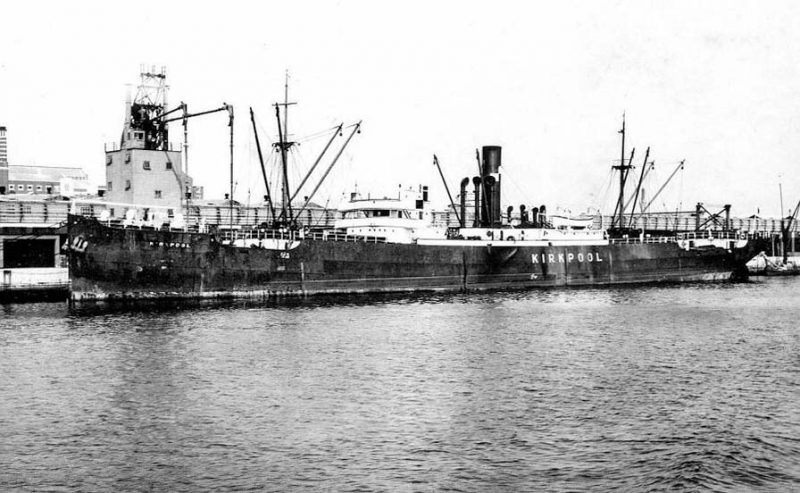 4,840 gross tons. Built by Sir. J. Laing and Sons, Sunderland and completed in 1928.
4,840 gross tons. Built by Sir. J. Laing and Sons, Sunderland and completed in 1928.
On the 10th April 1942 whilst on passage between Durban and Montevideo with a cargo of coal the ship was sunk by the German raider Thor (Raider E). Sixteen members of the ship were lost.
The attack on Kirkpool continued whilst efforts were being made to abandon ship and all boats were destroyed or made unserviceable. Shells continued to shower down on the crew whilst rafts were being launched and this operation was difficult enough as Kirkpool still had way on her. After the attack, with Kirkpool a blazing wreck and low in the water, a launch from the raider picked up the survivors and the ship proceeded away immediately at full speed for 12 hours.
The crew from Kirkpool were later transferred to the supply ship Regensburg which already carried a large number of captive seamen and passengers, including some women and children. Some of the survivors were later again transferred to the Dresden and both vessels eventually made for Yokohama. The survivors were imprisoned in Japan in appalling conditions.
The master of Kirkpool, Captain Kennington, died of malnutrition on the 14th March 1944 and a further crewmember died in prison.
The German raider Thor was built by Deutsche Werft, Hamburg for the Oldenburg-Portugiesishe Line as the Santa Cruz.
She was 3,862 gross tons and carried 6 x 5.9 inch guns (from the old battleship Schlesein) 4 x 21 inch torpedo tubes, 2 aircraft, 90 mines and smaller anti aircraft weapons.
She sailed from Kiel on the 30th November 1941 and sank or captured 10 ships (including Kirkpool) totalling 56,037 gross tons.
Thor arrived at Yokohama on the 9th October 1942 and was moved next to the supply ship Uckermark when an explosion and subsequent fire on the former, gutted both ships.
Empire Dryden
7,164 gross tons. Built by Wm. Doxford at Sunderland and completed in 1942.
Torpedoed and sunk on the 20th April 1942 by German submarine U-572 in North Atlantic about midway between Bermuda and the U.S. coast. All the crew got safely away in the boats that kept in contact until midnight of the 22/23rd April. On the 5th May, after 16 days and nights in the open boat. One boatload of survivors in charge of the Chief Officer was picked up by the City of Birmingham and landed at Bermuda.
The other boat in command of the Master, Captain Powley, was never heard of again and he and 25 others lost their lives.
Empire Starlight
 6,850 gross tons. Built by Hong Kong and Whampoa Dock Co. Ltd. and completed in 1941.
6,850 gross tons. Built by Hong Kong and Whampoa Dock Co. Ltd. and completed in 1941.
This vessel was lost on the 1st June 1942 but the story begins on the 20th March 1942 when the convoy in which the vessel was making the voyage to North Russia was dispersed by heavy weather. Six ships made contact next day and thereafter were subject to fierce air attacks daily, to terrific weather conditions and to navigational difficulties in ice.
The other five ships became jammed in ice but Empire Starlight made open water losing touch with the other ships, two of which were later sunk. Empire Starlight finally arrived at Murmansk alone on the 27th March 1942. From then onwards the port and ships there were heavily attacked by German planes, for up to four times a day. Empire Starlight sustained two or three direct hits during discharging but her guns did good work being responsible for the destruction of at least three German aircraft. Finally on the 1st June 1942 she received a stick of bombs on the port side and she settled on the bottom, her decks being awash at high water.
Lloyds War Medals for bravery were awarded to her Captain and Chief Engineer.
The vessel was later salvaged by the Russians, and put back into service as Murmansk. In 1979 she was converted to a storage barge at Nakhodka and removed from Lloyds Register after 1980, and probably broken up.
Empire Rainbow
6,942 gross tons. Built by Greenock Dock Yard, and completed in 1941.
Whilst operating with a catapult launching system and carrying a Hurricane fighter aircraft, the vessel was torpedoed and sunk by a German submarine U-607 off Halifax N.S. on the 26th July 1942. There were no casualties.
German records indicate that she was also torpedoed by U-704 at about the same time as the attack by U-607.
Empire Arnold
7,030 gross tons. Built by Furness S.B. Co. Ltd., Haverton Hill, Middlesbrough and completed in 1942.
On the 4th August 1942 the ship was sunk by a German submarine U-155 whilst on passage from U.S. ports to the Middle East with a cargo of military stores. She was a new vessel, sister to ss Levenpool, taken over at the end of the war (see later), and had her first cargo on board when lost. Three engineers and 6 ratings were lost when she went down. Her Master, Captain Tate, was ordered out of the lifeboat and kept a prisoner on the submarine. The rest of the survivors spent 8 days in an open boat before making Georgetown, British Guiana.
Captain Tate was kept on the submarine for some time and arrived at a German P.O.W. camp in October 1942 where he spent the remainder of the war.
Empire Moonbeam
6,849 gross tons. Built by the Hong Kong and Whampoa Dock Co. Ltd. and completed in 1941.
On the 8th August 1942 the vessel was in convoy, which was attacked by a German U Boat pack. Escorts with the convoy dropped depth charges near to Empire Moonbeam and the crew panicked and some took to the boats without awaiting orders to do so. One of the boats tipped up throwing the occupants into the water and 7 men lost their lives. The remaining crew from the lifeboat were picked up by a Corvette and landed at Londonderry.
On the 12th September 1942 the vessel was finally sunk by a torpedo from a German submarine U-608 in the Atlantic, 3 ratings were killed.
Reedpool
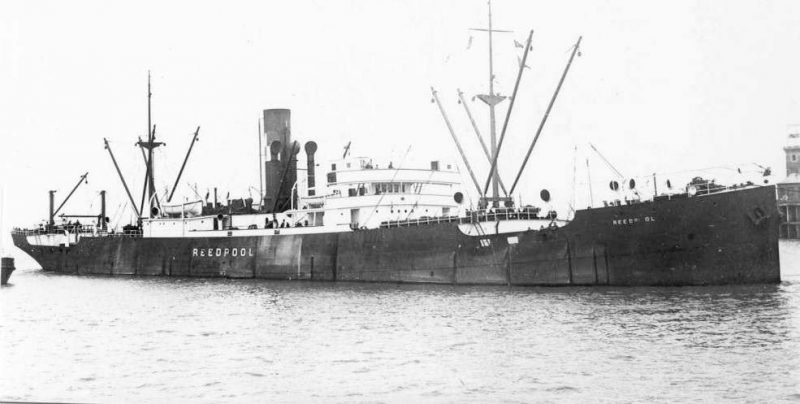 4,845 gross tons. Built by Ropner Shipbuilding and Repairing Company, Stockton on Tees and completed in 1924.
4,845 gross tons. Built by Ropner Shipbuilding and Repairing Company, Stockton on Tees and completed in 1924.
On the 20th September 1942 the ship was torpedoed by the German submarine U-515 off the coast of South America. Her master, Captain Downs was taken prisoner aboard the submarine, and 6 crew members lost their lives in the attack.
Daleby
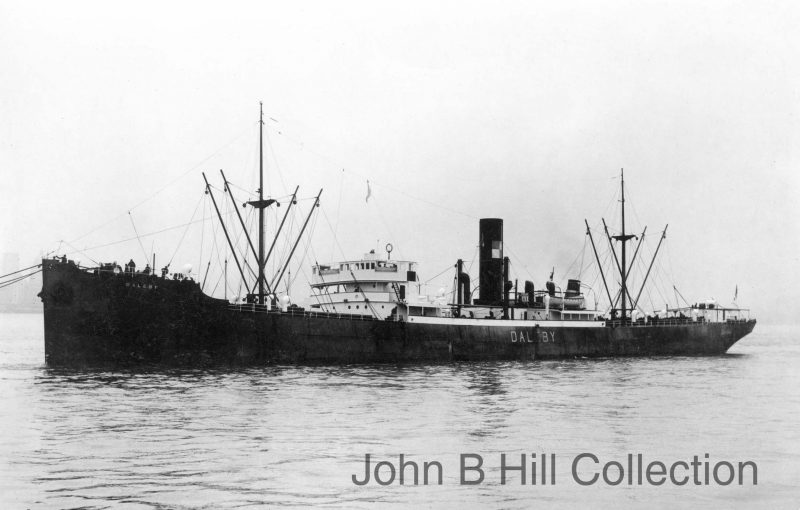 4,640 gross tons. Built by Armstrong Whitworth and Co. Newcastle on Tyne and completed in 1929 as Kitty Taylor. Ropners purchased the ship in 1934 and renamed Daleby.
4,640 gross tons. Built by Armstrong Whitworth and Co. Newcastle on Tyne and completed in 1929 as Kitty Taylor. Ropners purchased the ship in 1934 and renamed Daleby.
On the 4th November 1942, carrying a cargo of grain, she was torpedoed by German submarine U-89 in the North Atlantic. All hands were rescued and landed in Iceland.
Roxby
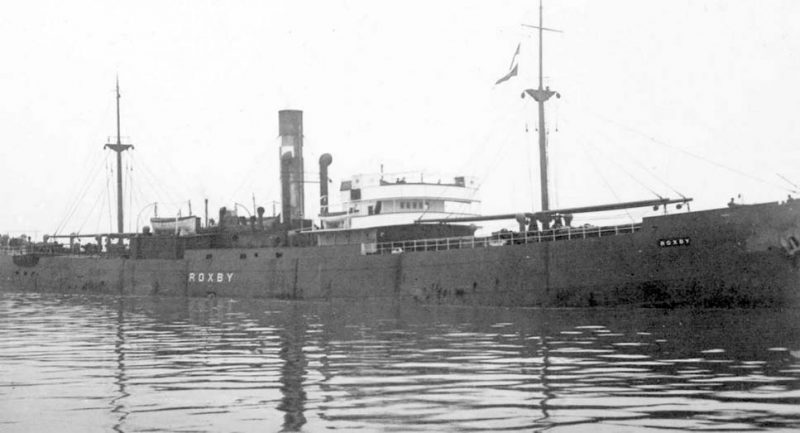 4,252 gross tons. Built by Ropner & Son at Stockton on Tees and completed in 1923.
4,252 gross tons. Built by Ropner & Son at Stockton on Tees and completed in 1923.
On the 7th November 1942 she was torpedoed by German submarine U-613 in the North Atlantic carrying a cargo of coal. Thirty-four of her crew was lost, and the survivors spent 4 days and 5 nights in an open boat before reaching St.John, N.B.
Lackenby
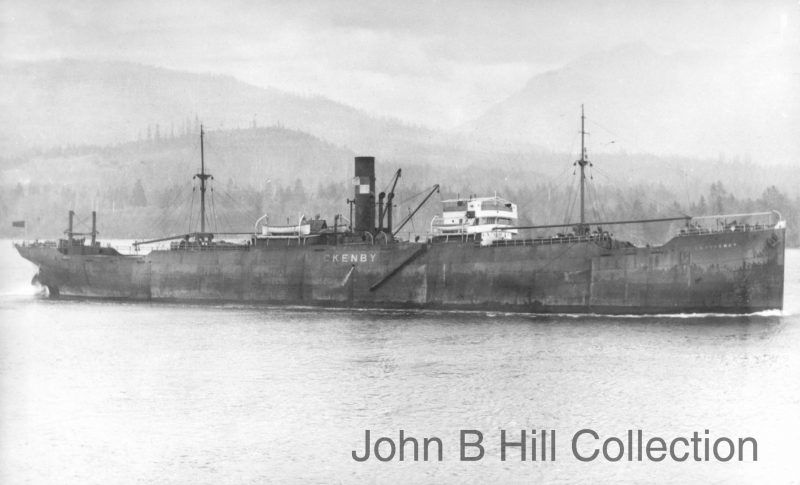 5,112 gross tons. Built by Wm. Gray & Co., West Hartlepool and completed in 1928.
5,112 gross tons. Built by Wm. Gray & Co., West Hartlepool and completed in 1928.
She was torpedoed by German submarine U-624 in the North Atlantic on the 23rd January 1943, although German sources say 25th January, carrying a cargo of phosphate. Her entire crew of 45 was lost.
Fort Pelly
7,130 gross tons. Built by Yarrow Ltd., in Canada and completed in 1942.
She was lost on the 20th July 1943. She had left Alexandria on 6th July 1943 with a cargo of cased petrol, vehicles, ammunition and stores together with 150 army ranks for the Sicily beaches. Fort Pelly arrived off Syracuse on the 13th July 1943 after an uneventful run down the Mediterranean. On the 17th July 1943 she was ordered to Port Augusta to keep up with Operations, and anchored on the 18th July and commenced discharging to smaller vessels. Air raids had become a nightly occurrence since arrival at the beaches and on the 20th July at 3.45am with no warning from the H.Q. ship the vessel was dive-bombed and sustained two direct hits and one near miss. One heavy bomb struck the engine room and demolished the whole of the amidships accommodation killing all the engineering officers and ratings. The other bomb burst in No 5 hold and the crew accommodation aft was shattered. The vessel caught fire and at 7.45 am the ammunition in the fore part of the ship exploded and the vessel disintegrated. 38 officers and men lost their lives, and many of the survivors sustained serious injuries. One of those killed was an apprentice.
Samsuva
7,238 gross tons. Built by New England S.B. Corporation in the U.S.A. and completed in May 1944.
On the 29th September 1944 she was sunk by a German Submarine U-310 en route from North Russia. The 2nd Engineer and 2 stokehold ratings were killed.
Her Master, Captain C. H. Churchill OBE, later become Commodore of the Ropner Fleet in the 1960s.
Fishpool
4,950 gross tons. Built by Sir J. Laing & Sons, Sunderland and completed in 1940.
14th November 1940 the ship was proceeding out in ballast on her maiden voyage when she was bombed and showers of incendiaries fell on her. The whole of the deck personnel were killed and the ship was a blazing inferno in no time.
Two boat loads of survivors got away, one of which was never heard of again. In the second boat the Chief Engineer died of his wounds, and the 3rd Engineer later died in hospital in Ireland. Altogether her Master and 25 other crew members were killed. The vessel was later salvaged and repaired on the Clyde.
On the 7th May 1941 she was damaged in a bombing raid on Barrow in Furness, and one rating was killed.
On the 9th May 1941 whilst still at Barrow in Furness a land mine was dropped on the ship seriously injuring her Captain and 7 ratings.
On the 25th July 1943 this ship became the second Ropner ship to be lost during the Sicilian campaign. Like Fort Pelly she loaded a military cargo at Alexandria on the afternoon of 24th July. At 3.50 am on 25th July five minutes after the beginning of an air attack on the harbour she was hit amidships by a heavy bomb. Petrol stowed on the boat deck immediately burst into flames and the ship’s oil tanks were also set on fire. The bomb caused several casualties among the officers. While the crew was trying to get the fighting appliances going, a second bomb was heard coming down and the crew rushed back to the stern. This bomb hit No 5 hatch again causing several casualties, while a third bomb exploded forward. Some records suggest that the actual explosion resulting in her loss occurred on the 26th July 1943.
The survivors abandoned ship going over the side into the water since there were no life rafts left. At approximately 6am the ammunition exploded and Fishpool was blown to pieces. 27 officers and men lost their lives, including her Captain, all deck, engine, and radio officers.
Samsylarna
 7,238 gross tons. Built by the Bethlehem Fairfield S.Y. Inc. Baltimore and completed in June 1944.
7,238 gross tons. Built by the Bethlehem Fairfield S.Y. Inc. Baltimore and completed in June 1944.
This ship was the last Ropner casualty of the war. The ship was on passage from U.S. ports to the Middle East with a mixed cargo including silver bullion, when she was hit by a torpedo launched from an enemy aircraft. The torpedo struck aft, and the rudder, propeller, stern frame and most of the after peak were blown away. No. 5 hold was open to the sea and the engine room flooded through the shaft tunnel. The greaser on watch in the tunnel managed to get away but not in time to close the watertight door against the inrush of water. The ship was abandoned when the afterdeck was awash but was later re-boarded. Salvage operations were put in hand immediately and the vessel was beached near Benghazi for temporary repairs. A certain quantity of cargo was discharged at Benghazi and the vessel then crept along the coast en-route to Alexandria. She was still making water and as the sea was gaining on the pumps she had to put into Tobruk for further repairs. Alexandria was reached eventually and after discharge of cargo and a thorough examination of the vessel it was decided that the repair facilities in the area could not cope with the damage and the Ministry decided to take her out of commission. Other than one rating that received serious injuries there were no casualties.
The ship was repaired after the war and in 1951 became the Italian owned Tito Campanella, and in 1961 she was sold to Poland and became the Huta Sosnowiec (see below left). She was one of a number of Polish owned Liberty ships trading from Poland to the Mediterranean and returning to the Baltic with iron ore. She was scrapped at Bilboa in October in 1971.
Three further ships, Clearpool, Deerpool and Rockpool were lost accidentally during the war by running aground, and Rudby was sold in 1943 to new owners in Malta.
Rudby
 4,846 gross tons. Built by Wm. Gray and Co., West Hartlepool in 1924.
4,846 gross tons. Built by Wm. Gray and Co., West Hartlepool in 1924.
In 1943 she was sold to Cassar and Co. Ltd. Malta and not renamed. In 1946 they renamed her Knight Templar, and in 1947 she became Vanmil of Cia. de Nav. Vandar SA. In 1950 she was sold to John Nurminen Carustamot Oy as Laila Nurminen (above), and in 1955 she became Amanita of Soc. Armamento Marittimo. In 1958 she was scrapped at Savona.
Clearpool
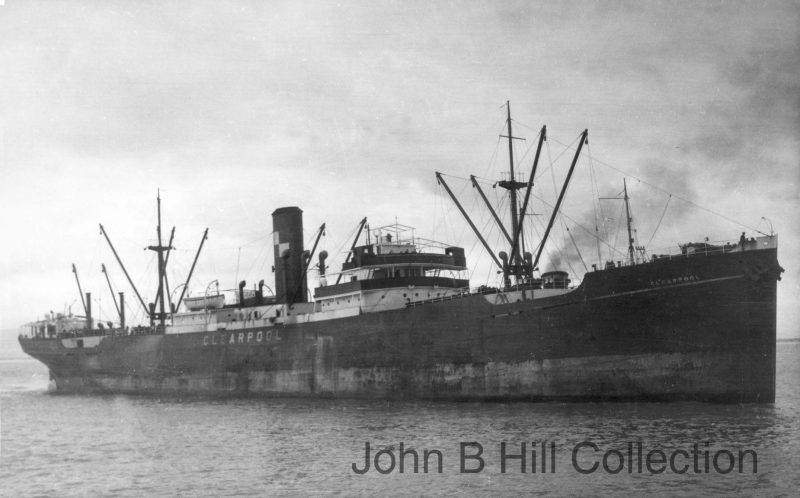 5,404 gross tons. Built by Wm. Gray & Co., West Hartlepool in 1935.
5,404 gross tons. Built by Wm. Gray & Co., West Hartlepool in 1935.
On 4th June 1944 she was wrecked off the Skitter Sands, River Humber on a voyage to Algiers.
Deerpool
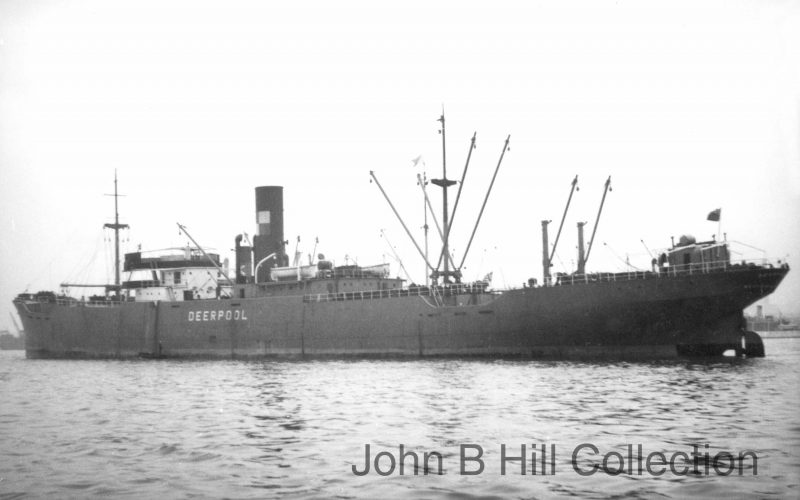 5,200 gross tons. Built by Wm. Gray & Co., West Hartlepool in 1930.
5,200 gross tons. Built by Wm. Gray & Co., West Hartlepool in 1930.
She was stranded near Spurn Head on 12th November 1939. Although her loss was caused by the lack of navigation lights on the shore due to the black out, her insurance pay out was attributed to marine risk.
Rockpool
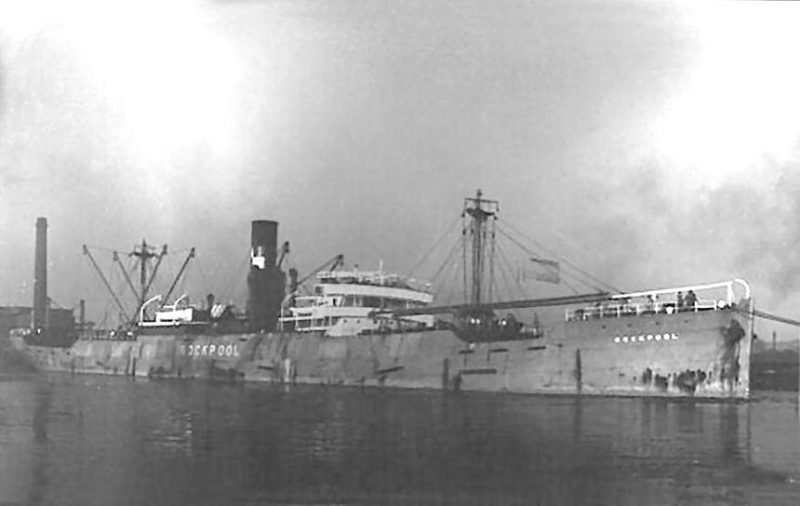 4,889 gross tons. Built by Wm. Gray & Co. Hartlepool in 1927.
4,889 gross tons. Built by Wm. Gray & Co. Hartlepool in 1927.
On 1.2.1941 she ran aground in River Clyde and abandoned. Salvaged by Ministry of War Transport and renamed Empire Trent. She was placed under the management of Ropners and in 1946 she was sold to South Africa and renamed General George Brink. In 1947 she was sold to to Arcturus SS Co. of Panama as Africana. In 1959 she was scrapped at Osaka arriving on 12.11.59.

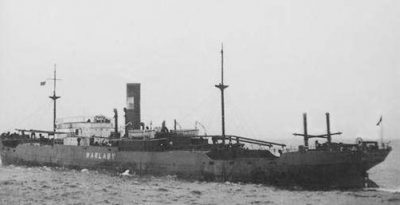
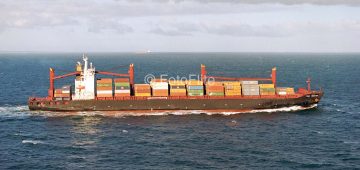
Comments
Sorry, comments are closed for this item